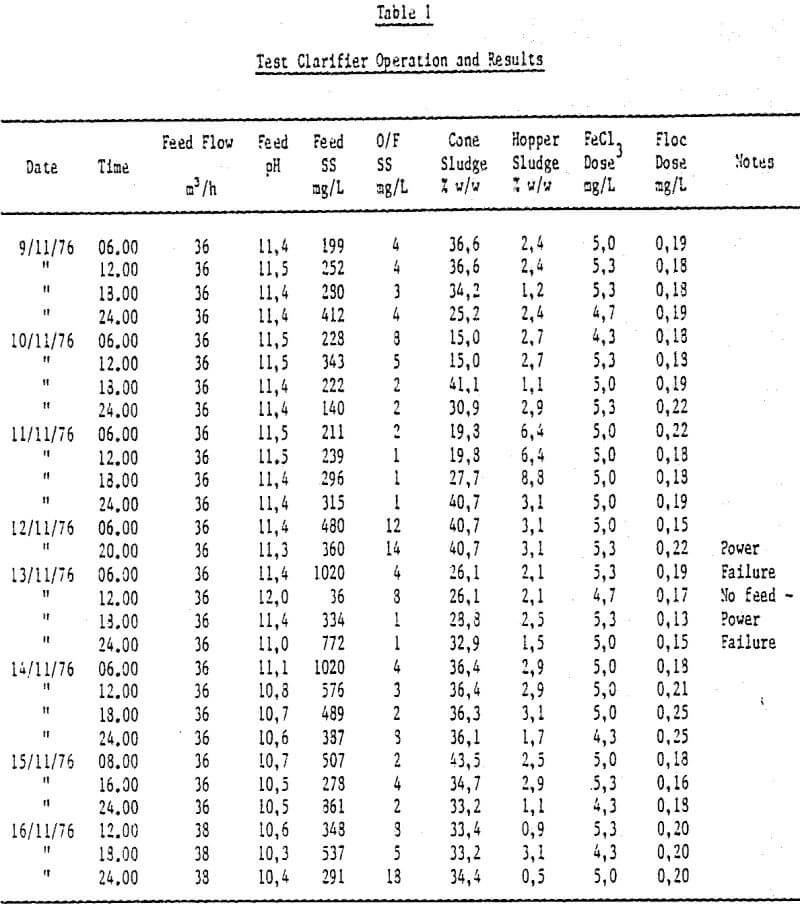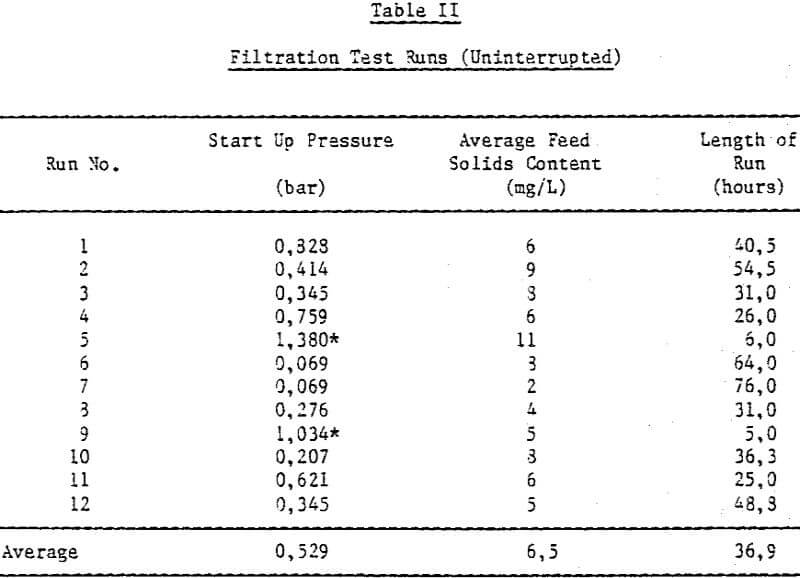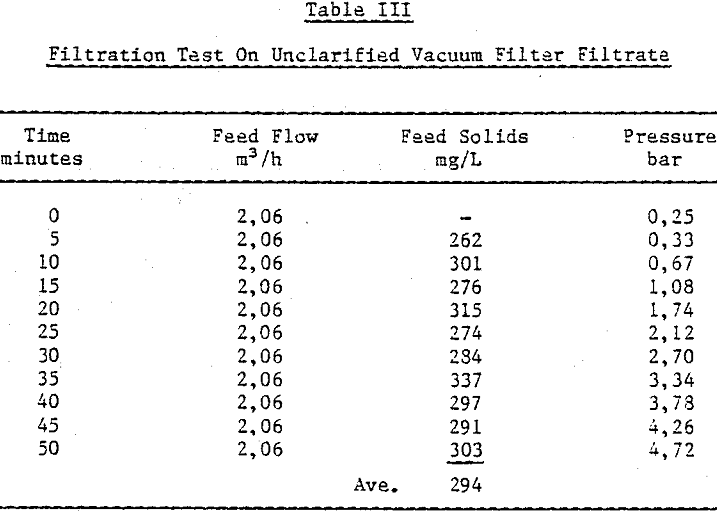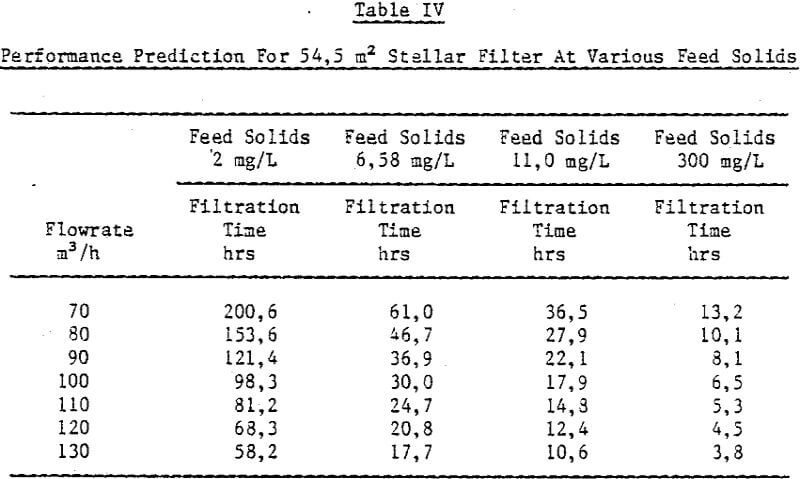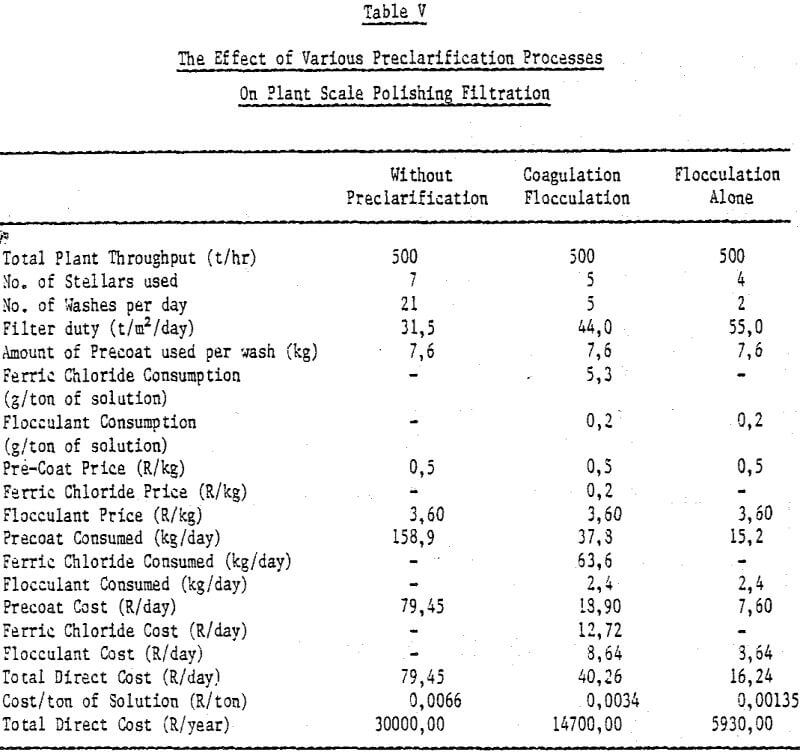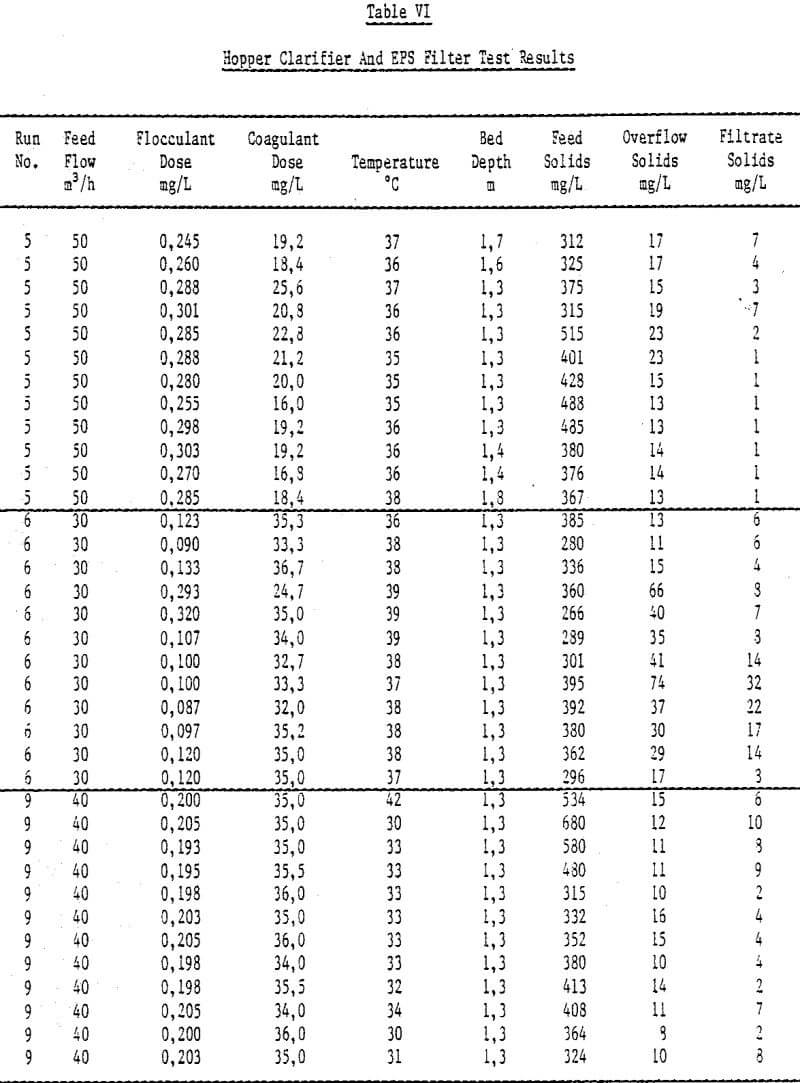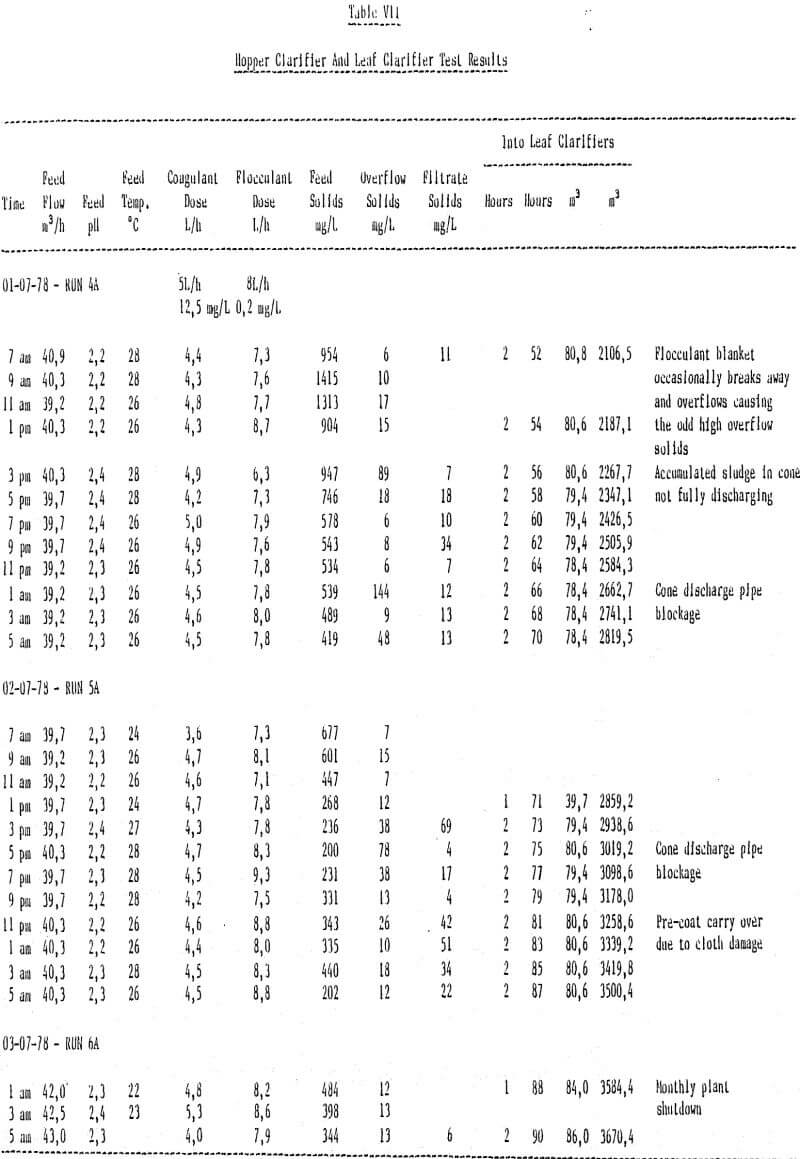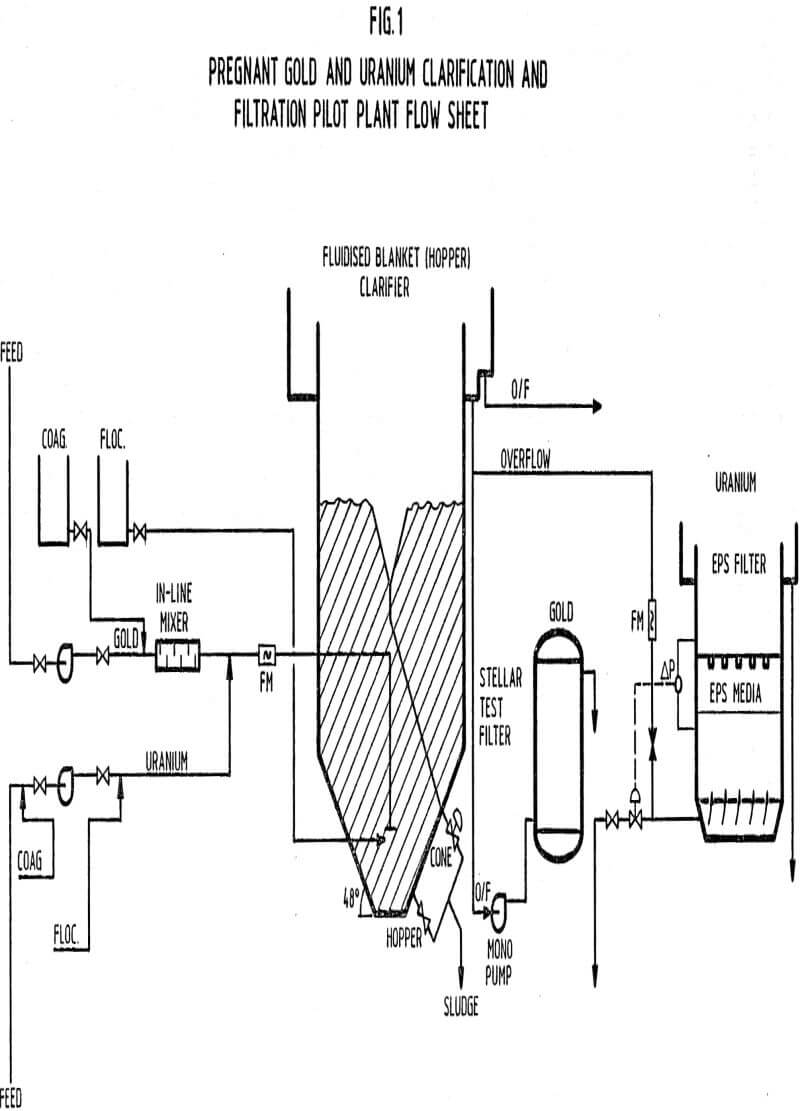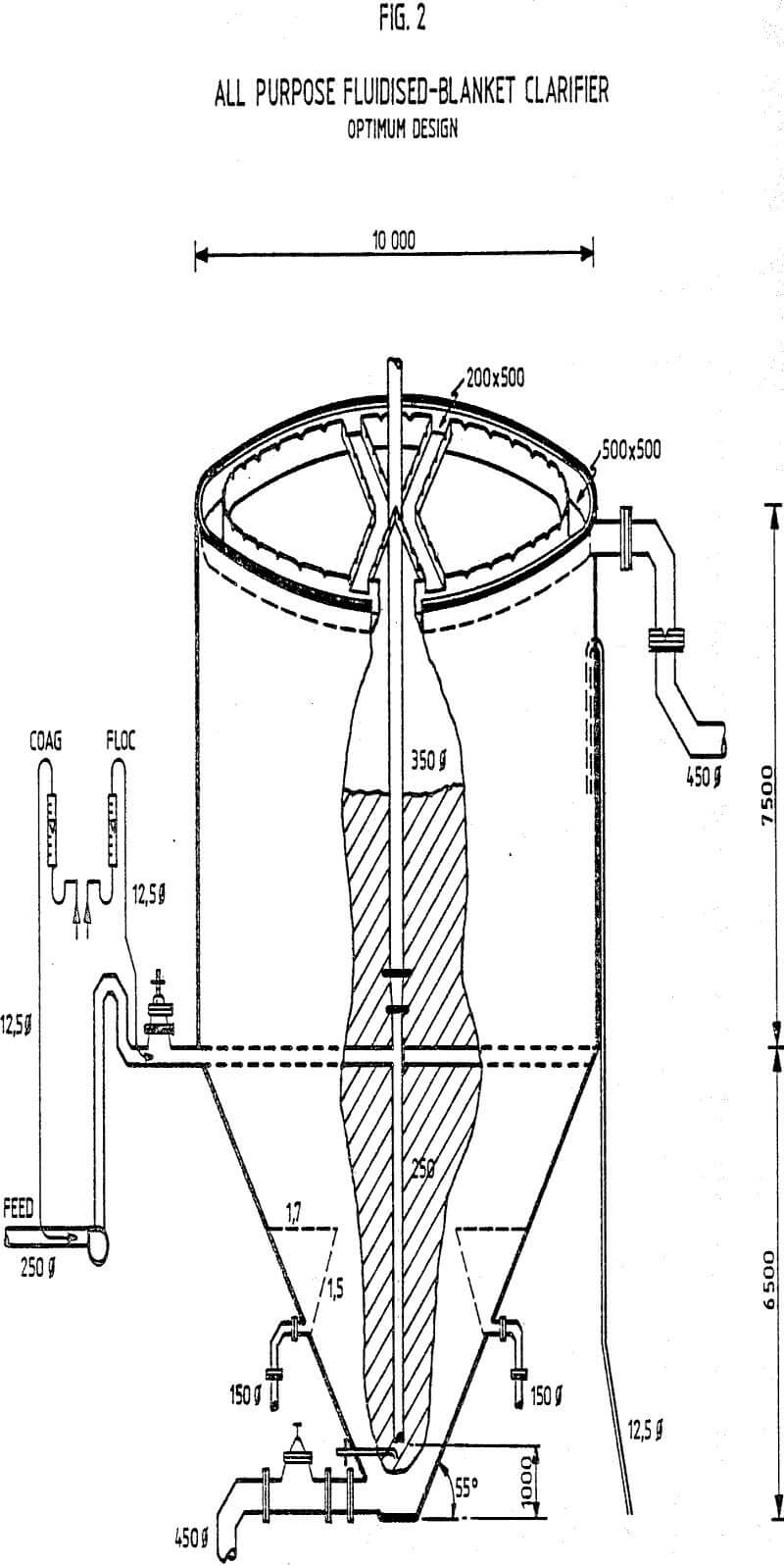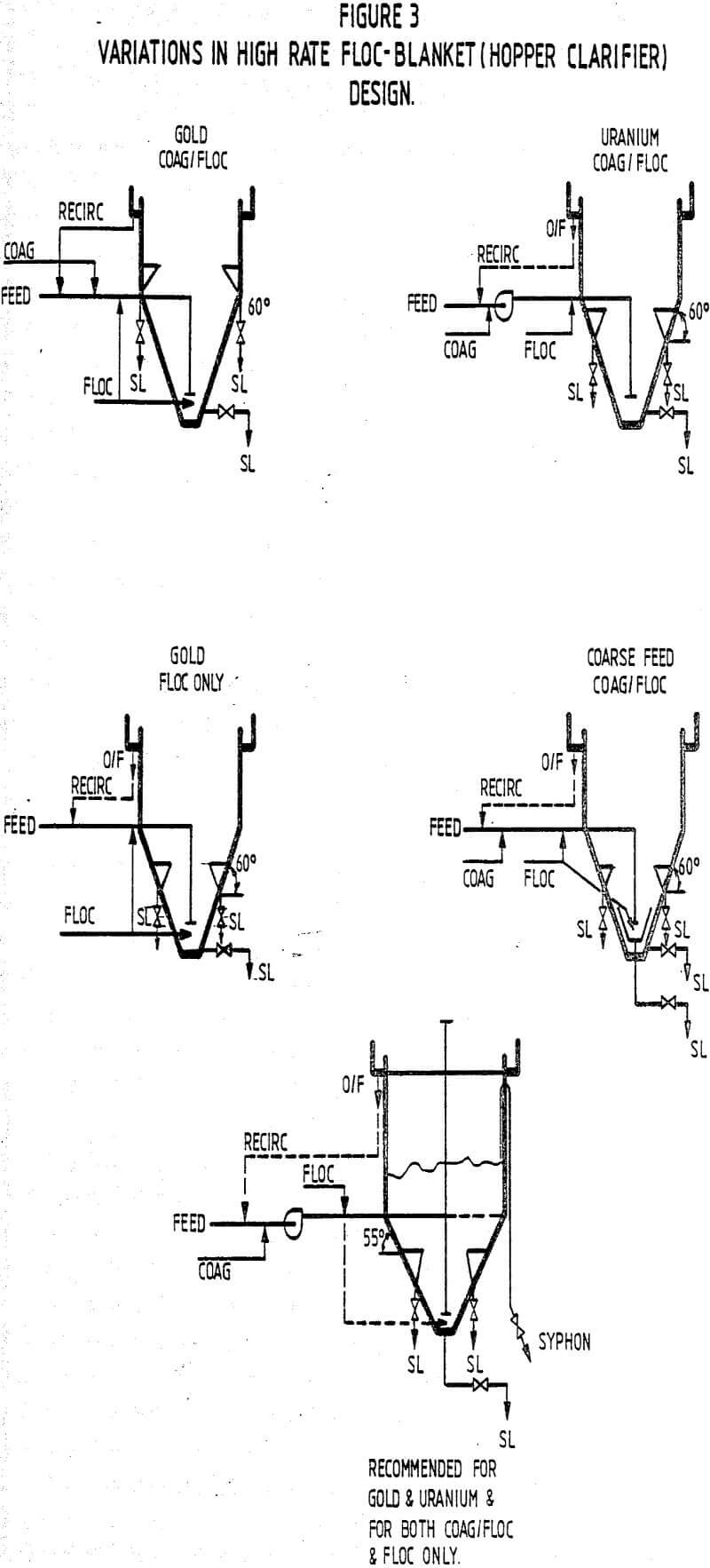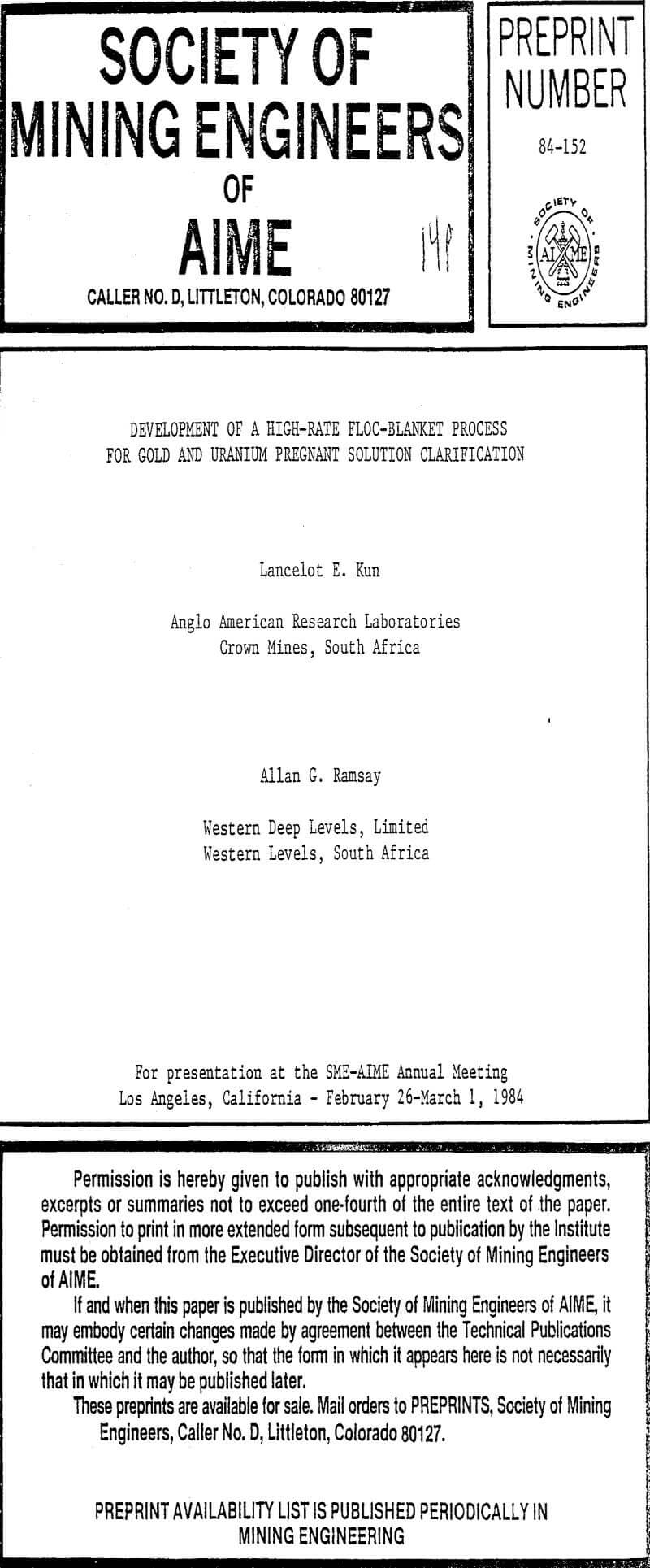Table of Contents
Before precipitation of gold can be commenced the relatively high suspended solids content (on average 350 mg/L) of the gold bearing rotary filtrate has to be reduced below 5 mg/L. On most gold mines to which AAC provides technical services a final polishing step to achieve the required clarity takes place in Stellar pre-coat candle pressure filters and/or leaf clarifiers.
Before solvent extraction of uranium pregnant solutions can commence their suspended solids content has to be reduced, preferably below 20 mg/L, as higher suspended solids contents can induce emulsion formation in the extract settlers resulting in high solvent losses and throughput reductions by increasing the phase separation times.
Experimental
The clarifier was fed from the main plant stream through a 76 mm diameter hose and pipe. The feed flow was controlled by a manually operated valve and was measured by an orifice plate coupled to a differential pressure gauge calibrated in m³/h units up to 50 m³/h. A 2 m long 150 mm diameter baffled in-line mixing race was installed 6-10 m upstream of the feed inlet situated near the bottom of the hopper.
The rotary vacuum filter filtrate, containing on average 350 mg/L solids and having a pH of 10,8-11,2, was fed to the hopper clarifier at a constant feedrate of 36 m³/h (equivalent to a rising velocity of 7,7 m/h) and was clarified to less than 15 mg/L solids by the addition of approximately 5,3 mg/L ferric chloride and 0,2 mg/L of Superfloc N100 flocculant. Once the floc-blanket was established, overflow solids averaged 7 mg/L. The total hourly sludge discharge was 1 m³, i.e. 2,8 per cent of the total volume fed to the clarifier. The control cone sludge averaged 30 per cent w/w solids and the hopper sludge 2 per cent w/w.
Filtration
A bleed from the hopper overflow header was fed to the 0,56 m² test filter at 1,373 m³/h by means of a small mono pump. The mono pump was installed so that a constant flowrate and the maximum allowable pressure could be attained.
The flowrate to the filter and the corresponding pressures were checked and logged every two hours. Filter feed samples for suspended solids determination ware also taken at two hourly intervals.
When the maximum allowable pressure of 490 kPa (4,33 bar, 70 psi) was reached, the filter was taken off line, backwashed, pre-coated, then put back on line. The amount of pre-coat used was 96 g per cycle.
The equation modelling the average results from the test filter data is as follows

This equation is only valid when the filter feed solids content is in the range of 2-15 mg/L. The equation for a feed solids range of 270-360 mg/L is as follows:

The above equations were derived from the equation for rate of filtrate production through a porous media which is given by:
dV/dθ = A² (P – P1)/µ ∝ WV
where V = volume of filtrate m³
O = filtration time hours
P = pressure across filter kg/m²
P1 = filter medium resistance kg/m²
µ = filtrate viscosity kg/m/h
W = feed solids content kg/m³
∝ = specific filter cake resistance h²/kg
A = filter surface area m²
Discussion of Results
The pilot plant tests indicated that the coagulation/flocculation process using 5,3 g/m³ ferric chloride and 0,2 g/m³ flocculant is capable of producing less than 15 mg/L solids overflows continuously at rising velocities of 5-8 m/h.
Further pilot plant tests using a dose of 0,2 mg/L Magnafloc 351 flocculant on its own at rising velocities between 5,5-10,5 m/h proved that as long as the height/width ratio of the unit was not less than 1,4 to 1,0 the overflow clarities could be kept below 15 mg/L.
Pilot Plant Equipment: The plant was identical to the one used on gold pregnant solution clarification except for a change in the reagent mixing-in which was affected outside the hopper, as well as the corrosion proofing of the system by rubber lining of the equipment.
At the first mentioned plant the collected overflow from an identical pilot plant was pumped to an isolated section of the leaf clarifiers which were precoated with kieselguhr.
Clarification: At the second plant pregnant rotary vacuum filter filtrate (unclarified pregnant solution) containing on average 400 mg/L suspended solids and having a pH of 1,2-2,1 was pumped to the bottom of the hopper clarifier at feed rates of 30, 40 and/or 50 tons per hour (equivalent to 6,4, 8,5 and/or 10,7 m/h rising velocities). The filtrate was clarified to under 25 mg/L suspended solids by the addition of 20, 35 and/or 50 g/t sodium chloride coagulant plus 0,1, 0,2 and/or 0,3 g/t Magnafloc R351 flocculant.
Filtration
At the second plant the EPS (expanded polystyrene) filter was used and further clarified the hopper overflow to under 12 mg/L at filtration velocities of 5,4-6,4 m/h. Mechanical design difficulties made this filter unsuitable for further development and its use was discontinued.
At the other plant the use of the hopper clarifier overflow resulted in a 12 fold reduction in the pre-coating of leaf clarifier leaves. The filter duty on the test leaves was 505 m³/leaf compared to 42 m³/leaf on the plant without the use of the hopper clarifier.
Pregnant Solution Clarification
An hourly 625 tons of pregnant gold solution flow had to be preclarified on a continuous basis to below 20 mg/L suspended solids content in existing plant equipment, in this case a 10 m diameter, 14,7 m deep, 60° conical bottomed pachuca tank. At 625 tons per hour flow the rising velocity was 7,96 m/h and the combined coagulation/flocculation fluidised blanket process was employed initially.
An hourly 700 tons of pregnant uranium solution flow had to be preclarified on a continuous basis to below 30 mg/L suspended solids content in a plant designed on pilot plant test results. The plant employs the coagulation/flocculation process (imperative for uranium pregnant solutions) and requires a dose of 20 mg/L sodium chloride coagulant and 0,2 mg/L flocculant.
